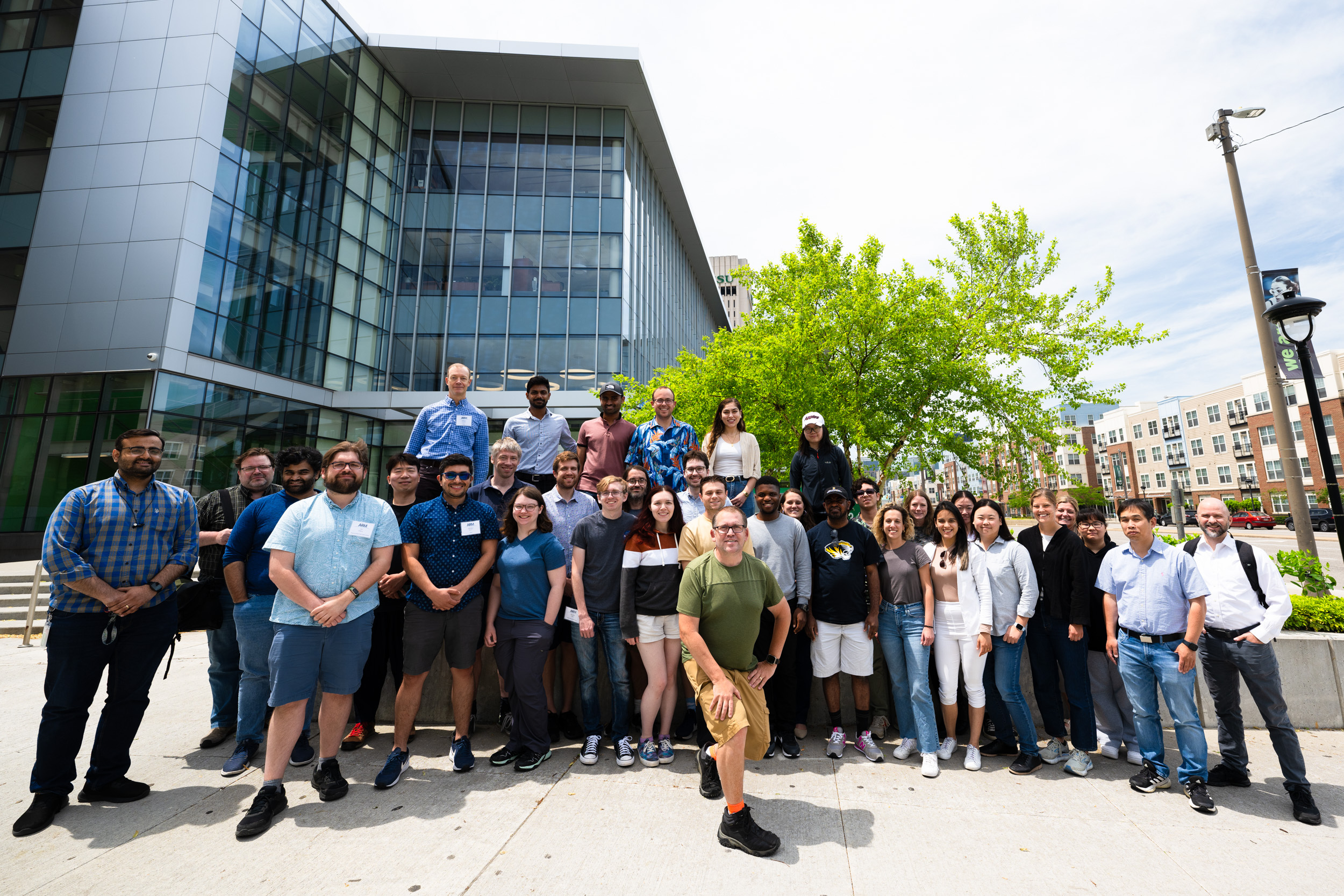Editor’s note: Max Grover and Scott Collis of Argonne National Laboratory provided the following post.
From May 19 to 24, 2024, ARM hosted its fifth summer school, the first to explicitly focus on open science. That week, 23 students and 12 instructors from around the world gathered in Cleveland, Ohio, to discuss open science in ARM and how open-source tools can be used to connect observations with high-resolution model data.

Open Science Training
The theme for this year’s ARM Summer School was “Open Science in the U.S. Department of Energy’s (DOE’s) Atmospheric Radiation Measurement (ARM) User Facility: Connecting State-of-the-Art Models with Diverse Field Campaign Observations.” This theme has close ties with several in ARM’s 2020 Decadal Vision, mainly the second through fourth themes (Mather et al. 2021):
- Achieve the maximum scientific impact of ARM measurements through increased engagement with observational data by ARM staff, including the application of advanced data analytical techniques.
- Enable advanced data analytics and community use of complex ARM data sets through the advancement of computing infrastructure and data analysis.
- Accelerate and amplify the impact of ARM measurements on earth system models (ESMs) by exploiting ARM and ESM frameworks to facilitate the application of ARM data to ESM development.
The week consisted of a combination of lectures and hands-on exercises, all focused around training attendees on how to combine the open-source tools supported by ARM and data collected from ARM field campaigns for their own projects. In the spirit of open science, most of the lectures had at least some component focused on Jupyter Notebooks, which students could adapt for their own workflows.

The first day of the summer school, students formed their own groups, developing a unique science question related to an ARM atmospheric observatory or field campaign (and associated modeling effort). While one group focused on the Southern Great Plains atmospheric observatory, the other three groups each focused on one of the following campaigns:
- Cloud, Aerosol, and Complex Terrain Interactions (CACTI)
- Cold-Air Outbreaks in the Marine Boundary Layer Experiment (COMBLE)
- Surface Atmosphere Integrated Field Laboratory (SAIL).
Multiple members of the Large-Eddy Simulation (LES) ARM Symbiotic Simulation and Observation (LASSO) activity participated as instructors and served as subject matter experts to students using high-resolution model output in their projects.
Students refined their projects during the week, culminating in an open-science cookbook, a citable scientific work for which each student received credit. ARM’s open-source Python packages, mainly the Python ARM Radar Toolkit (Py-ART) and the Atmospheric data Community Toolkit (ACT), were used heavily throughout the four project cookbooks.
The students presented their work to the broader group at the end of the week, returning to their home institutions with a better understanding of ARM data and tools, related science questions, and how to collaborate using best practices for open science.
This year’s summer school brought together students and instructors from 22 institutions. Students’ experience levels ranged from undergraduate to postdoctoral. Instructors ranged from early to late career, representing DOE Office of Science national laboratories and external organizations.

Thanks to Those Who Made it Possible!
ARM staff, as well as investigators funded by DOE’s Atmospheric System Research (ASR) program, were instrumental in the summer school’s success. They represent the full data life cycle within ARM, from instrument mentors, data infrastructure developers, and value-added product developers to science users. They contributed to planning the event and teaching and mentoring students during the week in Cleveland.
Here is a list of the instructors and mentors who made the event possible:
- Scott Collis, Argonne National Laboratory
- Ann Fridlind, NASA Goddard Institute for Space Studies
- Robert Jackson, Argonne National Laboratory
- Damao Zhang, Pacific Northwest National Laboratory
- Daniel Feldman, Lawrence Berkeley National Laboratory
- Max Grover, Argonne National Laboratory
- Joseph O’Brien, Argonne National Laboratory
- Mia Li, University of Oklahoma Cooperative Institute for Severe and High-Impact Weather Research and Operations (CIWRO)
- Michael Giansiracusa, Oak Ridge National Laboratory
- Sujata Goswami, Oak Ridge National Laboratory
- Thijs Heus, Cleveland State University
- Timothy Juliano, National Science Foundation (NSF) National Center for Atmospheric Research
- William Gustafson, Pacific Northwest National Laboratory
- Ya-Chien Feng, Pacific Northwest National Laboratory.
Special thanks to Argonne’s Jeri Knepper, the ARM Communications Team at PNNL, Cleveland State University for serving as the venue, and the ARM user facility.
Next month: Hear the perspective of the students.

